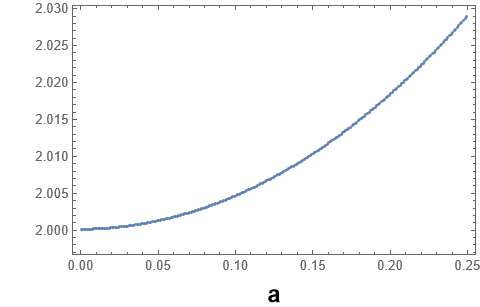I rarely use Mathematica, but I usually do not have any problem with simple commands like Minimize or Maximize. I have find to maximum over $0<a\le\tfrac14$ of the minimum over $c<p\le\tfrac12$ for some very small positive constant $c$ of the following expression:
$$\frac{p \log\frac{p}{p+a}+(1-p) \log\frac{1-p}{1-(p+a)}}{a^2}\,.$$
Hence, I tried to use Maximize[{Minimize[{(p Log[(p/(p+a))]+(1-p) Log[((1-p)/(1-(p+a)))])/a^2, 0<a<=1/4 && 1/100<p<=1/2},{p}], 0<a<=1/4 && 1/100<p<=1/2}, {a}], but I do not any result at all.
Could you please explain the reason of the missing output?

